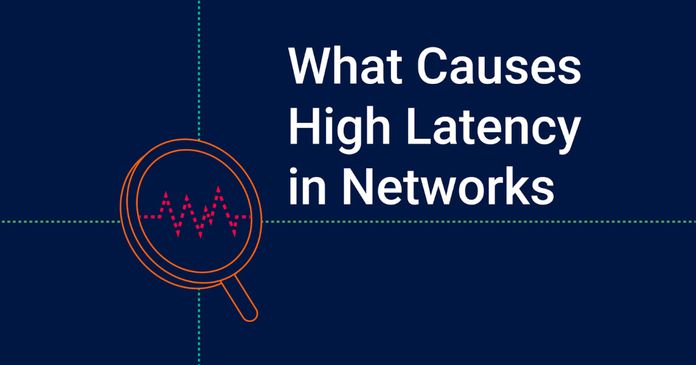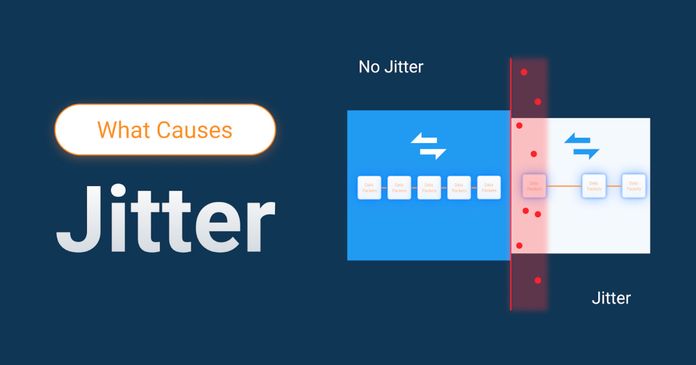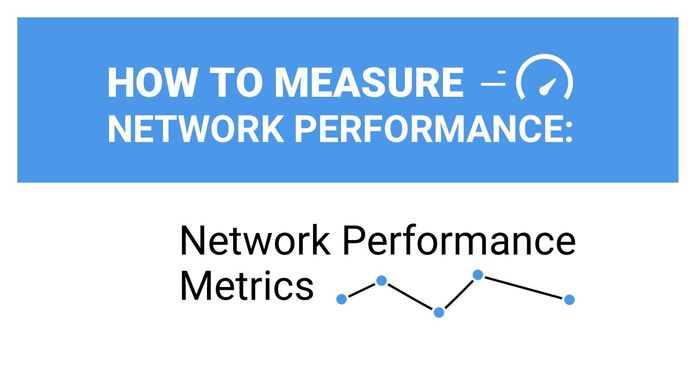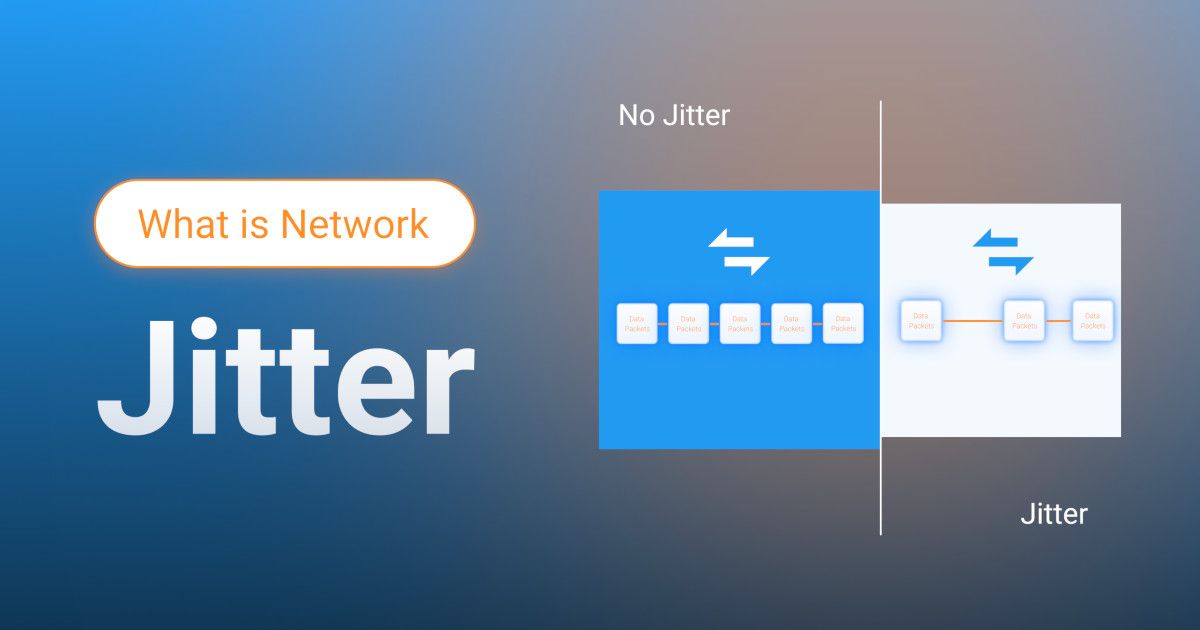Table of Contents
Table of Contents
As you set out to optimize and understand your network, two essential metrics you'll need to master are latency and jitter. While they might seem similar at first glance, both latency and jitter represent distinct aspects of how data travels across a network, influencing everything from seamless VoIP calls and smooth video streaming to immersive online gaming and responsive cloud applications.
Why Start with Latency and Jitter?
Latency refers to the time it takes for data to travel from the source to the destination. It's a measure of delay and can significantly impact the responsiveness of applications, especially those requiring real-time communication like VoIP calls or video conferencing.
On the other hand, jitter measures the variability in packet arrival times. High jitter can lead to choppy audio or video, making communication difficult and frustrating.

High latency introduces delays, causing sluggish responses in your digital activities, while jitter disrupts the smooth flow of data, leading to inconsistent and unreliable performance. Together, these metrics play a crucial role in overall network reliability and network speed.
Your Exploration Ahead
In this article, we'll take you on a comprehensive journey through the world of latency and jitter. You’ll learn what these metrics are, why they are so important, and how they differ from one another, but also, how they impact each other. We’ll also guide you through the Best Practices for measuring and reducing these factors, ensuring that your network runs smoothly and efficiently.
Understanding and managing latency and jitter is not just for tech enthusiasts, it’s essential for anyone relying on a network for critical business operations or daily activities. High latency can make video conferences feel like a slug, web pages slow to load, and online games laggy.
Jitter can introduce frustrating inconsistencies in audio and video, disrupting your online experiences. For businesses, these issues can affect productivity, customer satisfaction, and even revenue.
Beyond immediate impacts, high latency and jitter can strain your network infrastructure. They may lead to increased bandwidth usage as your systems work harder to handle delays and errors, and they can require additional processing power to correct transmission issues.
- Degraded Application Performance: High latency slows down applications, while high jitter causes inconsistent performance, especially in real-time services like VoIP and video conferencing.
- Poor User Experience: Users may experience lag, choppy audio, and buffering, which can lead to frustration and reduced satisfaction.
- Increased Network Congestion: Both latency and jitter can cause packet retransmissions and additional network traffic, leading to congestion and further performance issues
Latency is a measure of the time it takes for data to travel from one point to another in a network. It's often referred to as "lag" or "delay," and it's typically measured in milliseconds (ms). In simple terms, latency is the time delay between a user action and the response from the network. For example, when you click on a link in a web browser, latency is the time it takes for the web page to start loading after you've clicked.
Latency is a critical metric in network performance, as it directly affects how responsive a network feels to users. It consists of several components, including the time it takes for data to be sent (transmission delay), the time it takes to process the data at routers and switches (processing delay), and the time the data spends travelling through the network's physical medium (propagation delay).

The lower the latency, the more responsive the network will be. High latency, on the other hand, can make applications feel slow and unresponsive, leading to frustration for users.
Several factors contribute to latency in a network:
1. Network Congestion:
- Occurs when the volume of data traffic exceeds the network's capacity, leading to delays as data packets queue up for transmission.
- Examples include high traffic during peak usage times, large file downloads, cloud-based applications, video conferencing, and DDoS attacks.
2. Distance:
- The farther data needs to travel, the more latency increases due to the time it takes for signals to propagate through physical mediums.
- Impacts businesses with remote offices, cloud-based applications hosted in distant locations, and remote workers.
3. Hardware Issues:
- Outdated or underpowered hardware, such as old routers, low-bandwidth connections, insufficient RAM, and overloaded servers, can bottleneck data processing, causing latency.
4. Software Issues:
- Bugs, inefficiencies, or outdated software can slow down data processing and transmission, leading to higher latency.
- Examples include poorly optimized operating systems, application bugs, inefficient network protocols, and security software.
5. Packet Loss:
- Occurs when data packets fail to reach their destination, leading to retransmissions and delays, ultimately increasing latency.
- Can be caused by network congestion, environmental factors, and interference.
6. Quality of Service (QoS) Settings:
- Misconfigured QoS policies can introduce latency by overly restricting or misidentifying traffic, leading to delays for lower-priority applications.
7. ISP Limitations:
- Internet Service Providers (ISPs) may impose bandwidth limits, throttle speeds during high usage periods, or have outdated infrastructure, all of which can contribute to higher latency.
Want to dive deeper? Read the full article “What Causes High Latency in Networks: The Silent Speed Bumps on Your Digital Highway” to understand these causes in detail and learn how to optimize your network for minimal latency and maximum performance!
Uncover what causes high latency in your network and how you can troubleshoot. Learn to identify congestion, QoS issues and more causing network delay.
Learn more

Different levels of latency - high or low - can greatly affect how well your network functions.
High latency means longer delays in data transmission, which can lead to slower loading times, lag in real-time applications like video calls or online gaming, and a generally sluggish network experience. Low latency, or good latency, on the other hand, indicates quicker data transfers, resulting in faster response times and smoother performance for applications.
The impact of high latency is especially noticeable in time-sensitive applications and services, where even slight delays can affect user experience and productivity:
- VoIP and Video Conferencing: High latency can cause noticeable delays in communication, leading to awkward pauses and a decrease in the quality of conversations. This is particularly problematic in real-time applications like VoIP (Voice over IP) and video conferencing, where timely responses are crucial.
- Online Gaming: In gaming, low latency is essential for a smooth experience. High latency can result in lag, where players see delays in their actions, making games less enjoyable and potentially unplayable.
- Web Browsing and Cloud Services: High latency can slow down the loading of web pages and cloud-based applications, leading to longer wait times and reduced productivity. Users expect instant access to information, and delays can cause frustration.
- Financial Transactions: In industries like finance, where transactions need to be processed in real-time, even slight latency can lead to significant losses. Speed is critical, and any delay can have serious consequences.

Jitter refers to the variation in the time it takes for data packets to travel across a network. While latency is the delay from the source to the destination, jitter is the inconsistency in that delay. Ideally, data packets should arrive at consistent intervals, but in reality, network conditions can cause them to arrive out of order or at irregular intervals, leading to jitter.
Network jitter is like someone cutting in line ahead of you at the supermarket checkout. Just as unexpected interruptions can disrupt your orderly progression through the queue, network jitter causes unexpected delays or variations in data transmission, disrupting the smooth flow of online activities.

Jitter is considered a network problem. While some levels of jitter are normal and completely expected, the more jitter you have, the worse you network performance becomes. And there are several factors in your network that can contribute to increasing levels of jitter, such as:
- Network Congestion: When a network is overloaded with traffic, it can cause delays in packet delivery, leading to jitter. This often occurs during peak usage times when multiple users or devices are competing for bandwidth.
- Hardware Limitations: Outdated or malfunctioning network equipment, such as routers and network switches, can struggle to handle data efficiently, causing jitter.
- Route Changes: Data packets may take different routes to reach the same destination due to dynamic routing protocols. These route changes can cause variations in packet arrival times, leading to jitter.
- Wireless Interference: In wireless networks, interference from other devices, physical obstacles, or environmental factors can disrupt signal strength and consistency, resulting in jitter.
- Buffering and Queueing: Network devices often buffer or queue packets before sending them to manage traffic efficiently. However, if these buffers are overloaded or mismanaged, it can cause packet delays and jitter.
Want to dive deeper? Read the full article “What Causes Jitter in Networks” to understand these causes in detail and learn how to optimize your network for minimal jitter and maximum performance!
Uncover what causes jitter in your network and how you can troubleshoot. Learn to solve jitter issues & achieve optimal performance.
Learn more

Jitter can have a significant impact on network performance, particularly for real-time applications like VoIP (Voice over IP), video conferencing, and online gaming. When jitter is high, it can cause issues such as:
- Choppy Audio/Video: Inconsistent packet delivery can result in distorted or interrupted audio and video streams.
- Latency Spikes: High jitter can lead to sudden spikes in latency, making real-time communication difficult.
- Packet Loss: In some cases, jitter can cause packets to arrive too late to be useful, leading to packet loss and the need for retransmissions, further degrading network performance.

Both latency and jitter play crucial roles in the quality and reliability of network-dependent applications. Understanding the difference between jitter and latency is key to optimizing your network's performance and ensuring smooth business operations.
Latency refers to the delay between sending a request and receiving a response over a network. In business-critical applications like video conferencing, cloud-based software, or real-time data analytics, high latency can cause noticeable delays. This can lead to inefficiencies, such as slow application performance or lag in communication, which can negatively impact productivity and customer experience.
Jitter involves the inconsistency in packet arrival times during data transmission. Even with low latency, high jitter can disrupt real-time services like VoIP calls or live video streams, where data must be delivered in a steady, continuous flow. Inconsistent data delivery can result in distorted audio, frozen video, or disrupted service, potentially leading to miscommunication or degraded user experience.

In summary, while latency affects the overall speed of data transmission, jitter affects the quality and consistency of data delivery. Both must be managed effectively to ensure smooth and reliable business operations.
Latency Example:
Consider a business using a cloud-based CRM system. If the network has high latency, employees may experience delays when accessing customer information or updating records. This delay can hinder sales processes, slow customer service response times, and reduce overall efficiency.

Jitter Example:
Imagine a company conducting a virtual meeting with a client via a video conferencing platform. Even if the connection speed is adequate (low latency), VoIP jitter could cause the audio to cut in and out or the video to freeze intermittently. This not only disrupts communication but can also create a poor impression and hinder critical discussions.
Measuring latency and jitter is essential for maintaining optimal network performance, especially in a business environment where consistent connectivity is critical. Network administrators are used to regularly monitoring latency and jitter to detect bottlenecks, optimize routing, and ensure smooth data transmission.
Latency, typically measured in milliseconds (ms), represents the time it takes for data to travel from the source to the destination. Lower latency indicates better network efficiency and a superior user experience. Latency is calculated using the following formula:
Total Latency = Propagation Delay + Transmission Delay + Processing Delay + Queueing Delay

- Propagation Delay: Time taken for a signal to travel from source to destination, influenced by distance and transmission medium.
- Transmission Delay: Time required to push bits onto the network, dependent on network speed.
- Processing Delay: Time for networking devices to process and forward data.
- Queueing Delay: Time a packet waits in a queue before transmission, often due to network congestion.
Jitter refers to the variation in delay between packets over a network. It is crucial for applications requiring real-time data transmission, such as video conferencing.

- Calculate Average Time Between Packet Sequence: Jitter is measured by calculating the time variation between packet arrivals. The average deviation from the mean delay is recorded in milliseconds (ms).
- Use Mean Deviation (MD) or Mean Absolute Deviation (MAD): Subtract the mean delay from each packet delay, take the absolute value, and then average these values. This gives you the average deviation from the mean delay.
- Use Average Delay to Measure Jitter: Jitter can also be represented as a percentage of the average delay, offering a clear view of how much delay varies in relation to the average.
To effectively measure and manage latency and jitter, various tools and techniques are commonly used, each offering different levels of insight into network performance:
1. Ping:
A basic tool that measures the round-trip time for packets sent from a host to a destination and back. While Ping is useful for gauging latency, it doesn't measure jitter directly. It provides a snapshot of latency at a single point in time, without any historical data or baselines.
2. Traceroute:
This tool maps the path data takes across a network to its destination, showing each step (or "hop") along the way. Traceroute helps identify where latency issues might be occurring, but like Ping, it only gives you a measurement at a specific moment. It doesn’t track historical data or provide insights into jitter.
3. Network Monitoring Software:
Comprehensive tools like Obkio NPM offer advanced capabilities for monitoring all network metrics simultaneously. Unlike Ping and Traceroute, it provides historical data, baselines, and real-time monitoring for both latency and jitter.
See how latency and jitter impact each other, helping you identify and resolve issues more effectively. With visual dashboards, alert systems, and detailed reports, Obkio offers a much more robust solution for managing and optimizing network performance.

Obkio is an end-to-end network monitoring tool that provides a comprehensive view of the entire network infrastructure, including jitter monitoring and latency monitoring as part of its comprehensive features.

- 14-day free trial of all premium features
- Deploy in just 10 minutes
- Monitor performance in all key network locations
- Measure real-time network metrics
- Identify and troubleshoot live network problems
Start measuring jitter and latency!

4. VoIP Testing Tools: For businesses that rely heavily on VoIP or video conferencing, specific tools like VoIPmonitor or MOS testing tools can measure both latency and jitter, ensuring that communication remains clear and uninterrupted.
Once you've measured latency and jitter, interpreting the results is key to understanding your network's health. When evaluating network performance, it's important to recognize these two points:
1. Latency is simply a measure of distance in terms of time, and by itself, it's not inherently bad. However, high latency can lead to noticeable delays in data transmission.
Latency Levels:
- Low Latency (0-100 ms): Ideal for most business applications, ensuring quick response times and efficient operations.
- Moderate Latency (100-200 ms): This may cause slight delays in real-time applications, but is generally acceptable for non-critical tasks.
- High Latency (200+ ms): Can severely impact performance, particularly in real-time communications, cloud applications, and remote access tools.

2. Jitter represents variability in data transmission times and is a network issue that can disrupt performance. While low jitter is typically not harmful, it's best to minimize jitter as much as possible .
Jitter Levels:
- Low Jitter (0-20 ms): Indicates stable and consistent data transmission, essential for VoIP, video conferencing, and other real-time services.
- Moderate Jitter (20-50 ms): This may cause occasional disruptions or minor quality issues in real-time applications.
- High Jitter (50+ ms): Likely to result in poor audio/video quality, frequent disruptions, and a generally unreliable connection.

By regularly measuring and analyzing these metrics, businesses can proactively identify potential issues, optimize their network infrastructure, and ensure that their operations remain smooth and efficient.
Latency and jitter are closely related aspects of network performance, and understanding their interplay is crucial for maintaining a reliable network. When latency fluctuates, it can directly cause jitter, leading to inconsistent packet delivery and impacting real-time applications like video conferencing and VoIP. On the other hand, high jitter can exacerbate latency by requiring additional processing time to reorder or buffer packets, further delaying data transmission.
These two factors are intertwined – high latency can lead to jitter, and jitter can make latency appear worse, particularly in scenarios where consistent performance is essential. Recognizing this connection is key to diagnosing and resolving network issues effectively.
- High Latency: When latency is high, it indicates that data packets are taking longer to traverse the network. This increased delay can contribute to higher jitter because the longer it takes for packets to reach their destination, the more variability there can be in their arrival times. High latency often results in more noticeable fluctuations in jitter, as delays in processing and transmission lead to inconsistencies in packet delivery.
- Consistent Latency: If latency is relatively stable but high, jitter can still be present but might be less severe. Consistent latency means that while the overall delay is substantial, the time variations between packets are less pronounced. This can result in a more predictable, though still slow, network performance.
- Low Latency: A network with low latency generally provides quicker data transmission and can help minimize jitter. When latency is low and stable, packets are delivered more consistently, leading to reduced variation in arrival times. This consistency is crucial for applications requiring real-time communication, such as VoIP and video conferencing.

- Inconsistent Packet Arrival: Jitter causes fluctuations in the timing of packet delivery, leading to inconsistent arrival times. This variability can cause delays in processing and aggregating packets at the destination, which can effectively increase the perceived latency. For applications sensitive to timing, such as online gaming or real-time video conferencing, jitter-induced delays can make the network feel slower and less responsive.
- Buffering and Retransmissions: To cope with jitter, network devices often use buffering techniques to manage incoming packets. While buffering can help smooth out variations in packet arrival times, it introduces additional delays as packets are held in queues before being processed. This buffering can increase latency, especially if the jitter is severe and the buffer size is inadequate.
Learn how to measure network performance with key network metrics like throughput, latency, packet loss, jitter, packet reordering and more!
Learn more

Minimizing latency is crucial for enhancing network performance and ensuring a smooth user experience. Here are some effective network optimization strategies and best practices for reducing latency:
Network Optimization Strategies:
1. Upgrade Network Infrastructure
- High-Speed Connections: Invest in higher-speed Internet connections, such as fibre-optic or gigabit Ethernet, to reduce the time it takes for data to travel between devices and servers.
- Modern Hardware: Use updated routers, switches, and network devices that support advanced technologies and higher speeds to minimize delays.
2. Optimize Routing and Traffic Management
- Efficient Routing: Configure routers and switches to use the most efficient routes for data traffic. Avoid unnecessary hops and choose routes with lower latency.
- Quality of Service (QoS): Implement QoS policies to prioritize critical traffic, such as VoIP or video conferencing, ensuring that these applications receive the bandwidth they need and reducing latency for high-priority traffic.
3. Optimize Application Performance
- Load Balancing: Distribute traffic evenly across multiple servers using load balancers to prevent bottlenecks and reduce latency.
- Data Compression: Implement data compression techniques to reduce the size of transmitted data, speeding up transfers and reducing latency.
4. Reduce Congestion and Bottlenecks
- Network Segmentation: Divide the network into segments to limit the scope of congestion and reduce the impact of high traffic on latency.
- Bandwidth Management: Monitor and manage bandwidth usage to prevent overloading network links and causing delays.
1. Regular Network Monitoring
- Performance Monitoring Tools: Use network performance monitoring tools to continuously track latency and identify potential issues. Tools like Obkio’s Latency Monitoring tool can provide real-time insights into network performance, troubleshoot latency issues and help pinpoint areas for improvement.
- Analyze Trends: Review historical data and trends to understand latency patterns and make informed decisions on optimization.
 Screenshot from Obkio's Network Performance Monitoring Tool
Screenshot from Obkio's Network Performance Monitoring Tool
2. Optimize DNS Performance
- Fast DNS Servers: Use fast and reliable DNS servers to reduce the time required for domain name resolution. Consider using public DNS services with low latency.
- DNS Caching: Implement DNS caching to store frequently accessed domain name resolutions locally, reducing the time needed to resolve domain names.
3. Update and Patch Systems
- Regular Updates: Keep network devices, servers, and software up to date with the latest patches and updates to ensure optimal performance and security.
- Performance Tuning: Apply performance tuning practices to optimize system configurations and improve response times.
4. Implement Redundancy and Failover Solutions
- Redundant Paths: Create redundant network paths and failover solutions to maintain network connectivity and reduce latency in case of network failures or disruptions.
- Disaster Recovery Plans: Develop and test disaster recovery plans to ensure quick recovery and minimal downtime, which helps maintain consistent latency.
In this guide, learn how to troubleshoot and improve network latency with fun analogies, step-by-step instructions, and tips for both users and businesses.
Learn more

To ensure a stable and smooth network experience, follow these network configuration adjustments and best practices for reducing jitter.
Network Optimization Strategies:
1. Implement Quality of Service (QoS)
Prioritize Traffic: Configure QoS settings on routers and switches to prioritize latency-sensitive traffic like VoIP and video streaming. By giving these applications higher priority, you reduce the chances of jitter affecting their performance.
Traffic Shaping: Use traffic shaping techniques to manage and regulate network traffic, ensuring a steady flow of data and minimizing fluctuations in packet delivery times.
2. Optimize Network Equipment
- Update Firmware: Regularly update the firmware on network devices such as routers and switches to benefit from performance improvements and bug fixes that can help reduce jitter.
- Use Reliable Hardware: Invest in high-quality network equipment that is designed to handle traffic efficiently and reduce packet loss, which can contribute to jitter.
3. Improve Network Design
- Reduce Network Hops: Minimize the number of hops data packets make between the source and destination. Fewer hops can lead to lower jitter by reducing the chances of variability in packet arrival times.
- Network Segmentation: Segment the network to reduce congestion and isolate different types of traffic. By separating traffic types, you can better manage and reduce jitter for critical applications.
4. Monitor and Manage Bandwidth
- Monitor Traffic Patterns: Use network monitoring tools to track traffic patterns and identify any congestion or bandwidth issues that might be causing jitter.
- Manage Bandwidth Usage: Implement bandwidth management practices to ensure that no single application or user consumes excessive bandwidth, which can lead to increased jitter.
1. Regular Network Monitoring
- Jitter Analysis Tools: Utilize Obkio’s jitter monitoring tool that can specifically measure and analyze jitter. It helps in identifying patterns and troubleshooting sources of jitter, allowing for targeted optimizations.
- Continuous Assessment: Perform regular assessments to ensure that network performance remains stable and that jitter levels are kept within acceptable limits.

2. Ensure Network Redundancy
- Redundant Paths: Establish redundant network paths to provide alternative routes for data in case of congestion or issues on the primary path. This redundancy helps maintain a consistent level of performance and reduces the impact of jitter.
- Failover Mechanisms: Implement failover mechanisms to quickly switch to backup connections if primary routes experience issues, ensuring minimal disruption and jitter.
3. Optimize Application Performance
- Application Settings: Adjust application settings to optimize performance for real-time applications. For example, configure voice and video applications to use lower bitrates if jitter is detected.
- Update Applications: Keep applications up to date to benefit from performance enhancements and improvements that can help mitigate jitter.
4. Implement Error Correction Techniques
- Error Correction Protocols: Use error correction protocols such as Forward Error Correction (FEC) to compensate for lost or corrupted packets, reducing the impact of jitter on application performance.
- Packet Retransmission: Configure network devices and applications to handle packet retransmission effectively, ensuring that lost packets are resent quickly and reducing jitter.
5. Optimize DNS and Routing
- Efficient DNS Resolution: Use fast and reliable DNS servers to reduce the time required for domain resolution, which can help minimize jitter for DNS-dependent applications.
- Optimized Routing: Configure routing to ensure that data follows the most efficient paths with minimal variability in transit times.
 Screenshot from Obkio's Network Performance Monitoring Tool
Screenshot from Obkio's Network Performance Monitoring Tool
As you've journeyed through the twists and turns of jitter vs latency networking, you’ve discovered how they can impact your digital experiences and why understanding their nuances is crucial for optimal network performance.
But before you head off, let's make sure you’re fully equipped for the adventure ahead!
Ready to take control?
- Tackle Latency and Jitter with Precision: Dive deeper into how you can effectively manage both latency and jitter in your network. Check out our guide to deploying Obkio to get started with the Best Tools In The Game.
- Master Troubleshooting: Equip yourself with the knowledge to troubleshoot and Resolve Network Issues Like A Pro. Our troubleshooting guides “Network Latency Troubleshooting”, “Network Jitter Troubleshooting” will walk you through advanced techniques for pinpointing and fixing latency and jitter problems.

Struggling with high latency or jitter can lead to poor application performance, frustrated users, and costly disruptions. Don’t leave your network’s performance to chance.
Obkio's Network Performance Monitoring Tool is a powerful solution designed to give you complete visibility into your network's performance, specifically focusing on critical metrics like latency and jitter. By continuously monitoring these factors in real-time, Obkio empowers you to quickly identify and resolve issues before they impact your users.
With intuitive dashboards, detailed reports, and proactive alerts, Obkio not only helps you troubleshoot existing problems but also enables you to optimize your network for peak performance. Whether you're managing a complex enterprise network or ensuring smooth connectivity for remote teams, Obkio is your go-to tool for maintaining a fast, reliable, and efficient network.
- 14-day free trial of all premium features
- Deploy in just 10 minutes
- Monitor performance in all key network locations
- Measure real-time network metrics
- Identify and troubleshoot live network problems













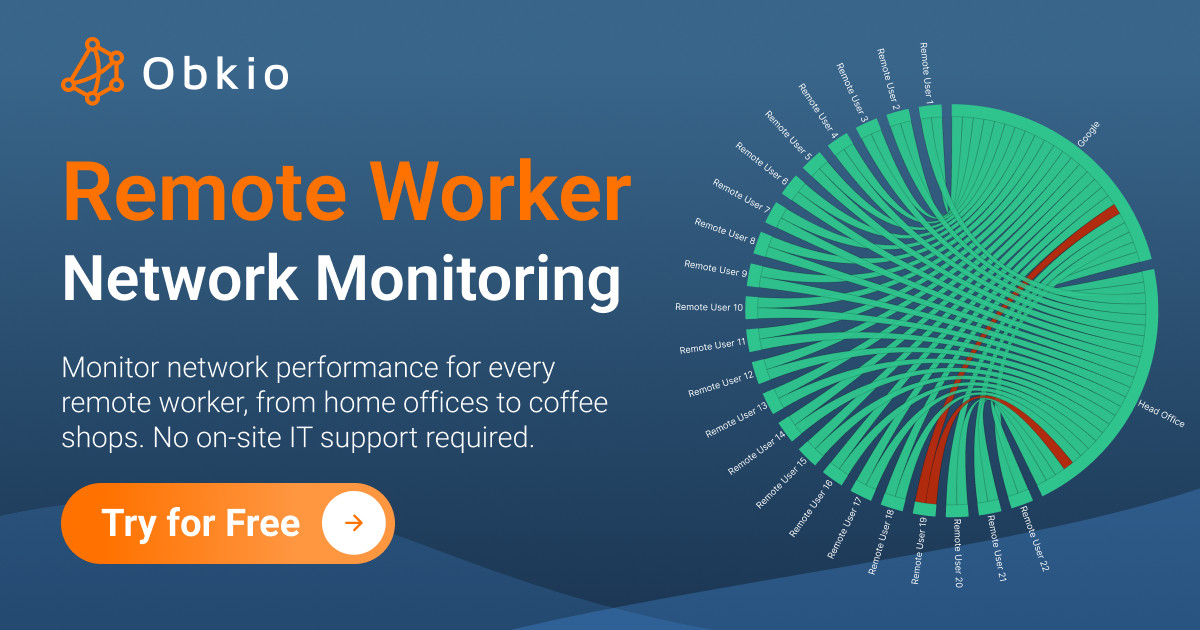













 Obkio Blog
Obkio Blog




